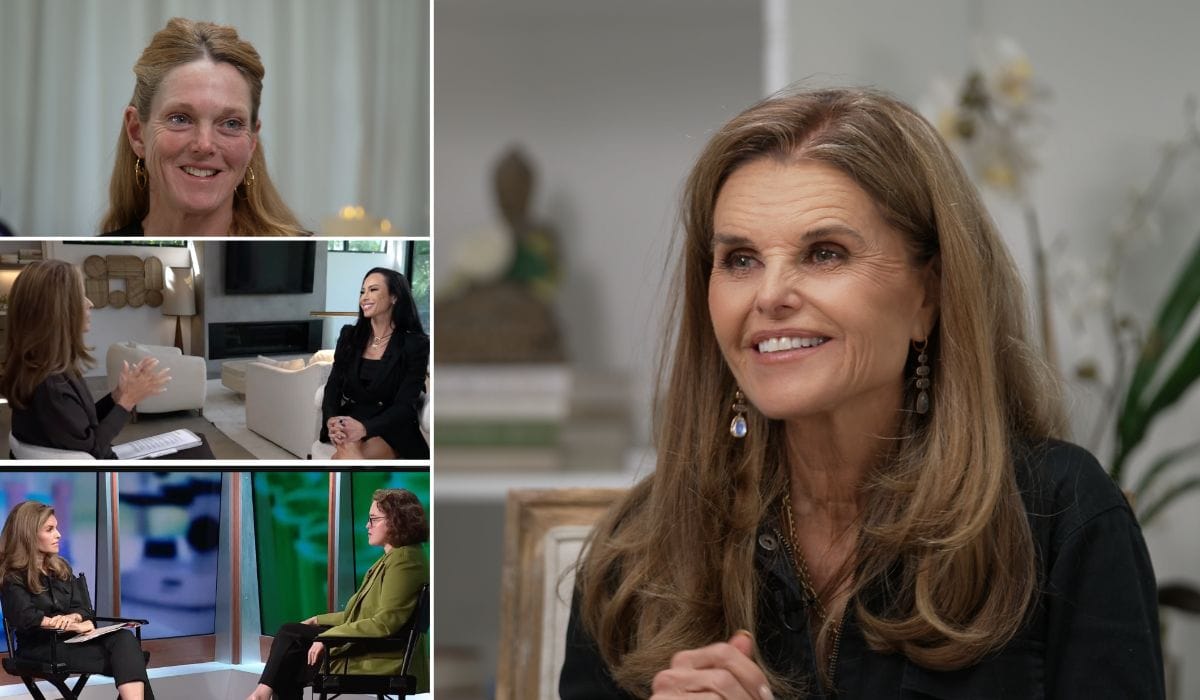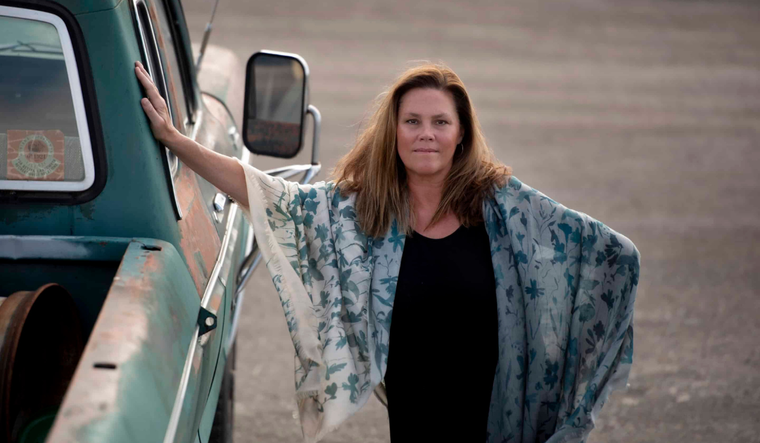This Is the Women’s Health Conversation You Don’t Want To Miss

There’s a sea change going on in women’s health.
For decades, women’s bodies were left out of the research, our physiology was misunderstood, and our symptoms were dismissed. Thankfully, that tide is finally turning—and this week, Maria sat down with three of the scientists helping to lead this change.
Stacy Sims, PhD, is a world-renowned exercise physiologist and nutrition scientist who spent her career challenging the long-held myth that “women are just small men.” Maria and Dr. Sims talk about the moment we’re in, why women are finally being seen and studied, how to train and eat for strength at every age, and what it really takes to live well and claim the health (and the care!) we deserve. You can read part of this conversation below, watch or listen to it here.
And on the TODAY Show this week, Maria interviewed two innovators who are breaking the mold and focusing on surprising new areas of a woman’s body: Francesca Duncan, a top researcher at Northwestern University, who says the ovaries are critical to a woman’s longevity and Dr. Gabrielle Lyon, who says building muscle can improve bone strength and mobility in older age. You can watch that interview here.
A CONVERSATION WITH STACY SIMS, PHD
Maria: There’s a sea change going on in women’s health in the last year or two. Talk to me about the difference you’re seeing right now.
Stacy: I look back about five years ago, which was around the onset of the pandemic, and there was still a huge discrepancy in women’s health. But because of the differential outcomes of the pandemic, it made the entire global medical system stand up and go, What’s going on here? So then when we started talking about sex differences and physiological differences between men and women, and it started resonating.
Now we see research coming out that’s really trying to focus more on women’s health, not generalizing from a male data set, and there are specific points of contention that are really starting to be examined. We look at cancer treatments, we look at dementia and Alzheimer’s, and we also see all the menopause conversation around hormone therapies, which then resonates back to PCOS and endometriosis—all these things that have been ignored up to this point.
Now there’s a groundswell movement to really try to bring that to the forefront.
Maria: When people come up to you or respond to you on social media, can you tell a difference in the questions that they are asking? Are they feeling empowered? Are they just waking up to the fact of the lack of funding in women’s health research?
Stacy: I get a lot of questions from people saying, “How can I help with research? Can I be a participant? Have you looked at this avenue for research funding? Have you talked to this venture capitalist? More and more women are also saying, “This finally makes sense. Now I can go talk to my doctor and tell them what I’m experiencing but not feel like I’m being gaslit.”
I think people are taking more ownership of their health now, and now they’re really trying to find out what they can do instead of just the traditional ways to go to a physician, a physician tells you, “Well, this is what’s wrong or not wrong and take this and do that.” There’s this distrust in the medical system now, or a lack of access and lack of resources. So, people are really trying to own it for themselves, to then be able to go to telehealth or their doctor and say, “This is what I know. Can you help me? If not, then I need to find someone else.”
Maria: Women’s health, for so long, was viewed as a mammogram and a pap smear and out the door. Women really need to know that at every decade, their health is completely different. What’s your advice to women at those different junctures?
Stacy: I always start at puberty, now that my daughter is in the middle of it. We see a definitive point where girls stop being physically active because they’re starting to feel very gangly in their body. There hasn’t been awareness of how there’s a difference between boys and girls as they go through puberty. The biomechanics of the way that girls move changes completely: their hips widen, their knee-to-hip angle is different, their shoulder girdle widens, so now running and throwing and jumping is completely different and not very comfortable. When we understand this, we can coach girls from a mental and a physical aspect that encourages new strength and functional movement through these new biomechanics, and we create a learning environment that isn’t toxic—that’s a safe space. Then, they flourish.
When we get into our steady reproductive years, this is where we have our sex hormones that work for us—for recovery, muscle development, and bone development. It’s in those reproductive years we see more and more anovulatory cycles, which is when we aren’t actually ovulating—and we might not know it. This could be due to environmental toxins, a lack of sleep, stress. So we have to be aware of all of the societal pressures that can alter menstrual cycle function in our reproductive years, and then consider how we train according to the stress and the load that’s going on with regards to the rest of life so that we can support menstrual function and endocrine function for the health of the woman as she’s aging. These reproductive years are when we’re getting peak bone density and lots of neuroplasticity. We’re developing stress resilience, immunity—all of these things that can change across the menstrual cycle. We want to be able to encompass and enhance with the type of physical training and mental training we’re doing.
Maria: What is the best advice today for a woman in her 40s, 50s and 60s so that she can age well, age independently, and age with strength.
Stacy: The main factors that go into a health span are sleep, physical activity, nutrition, mindfulness, and community engagement. If someone was coming to me and said, “Give me the top two things that I need to do so that I can age well,” I’d reply, “Nail sleep and strength training.” Because when we look at the upsurges of research on strength training, we see not only is strength training great for power, which we lose significantly as we age, but it’s also a really strong indicator of mortality.
Maria: You talk about also a particular kind of strength training. You’re not talking about light weights or even 10-pound bicep curls. You’re doubling down...
Stacy: Yes, I’m talking about lifting heavy. What’s heavy? It’s relative. If someone has never done any strength training, I’m not going to throw them in the gym and say, “We’re going to do 200-pound deadlifts,” because they’re not going to be able to do it. I’m going to phase that person in. I’m going to start with body weight, add some 10-pound dumbbells, and then as they get stronger and get through the range of motion and can move well, then we start getting really specific into our heavy range of lifting.
If we look at the schematic of strength and conditioning, we see that a zero to five repetition range is our power and strength-based range, and we know that power is really important. Power is how fast you can move under load. And for women, we only have a certain amount of fibers that move quickly, and we start to lose those rapidly as we age. And for strength, we want that central nervous system response, because we want that neuroplasticity. Eventually, you want to work toward no more than eight reps at 80 percent or more of one rep max.
Maria: What does that mean?
Stacy: If you go into a gym or you’re going to lift some weights, I want you to pick a weight that feels heavy, and I want you to lift it at least eight times. If you can lift it eight times, and towards the end of that you think you might be able to eke out two more repetitions with that weight with really good form, that’s your 80 percent. We call that eight reps with two in reserve. That’s the type of loading we want.
Ideally, we want to get you down to three to five reps—but it takes about a year to learn how to lift that heavy properly, and it can be a bit scary for people when we start talking about those kinds of loads. The goal: By the time you finish your strength training session, you want to feel worked but not exhausted. We want the strength and development of the muscles—but we don’t want that tear down, completely ripped feeling that so many women are used to having after a big, sweaty session where they think, Well, I did a really hard workout because I’m completely smashed. We’re looking for low end, heavy loads with lots of rest between our repetitions, so that we are able to really tax the central nervous system.
The idea of it is that we want to be able to carry our own suitcases when we’re 90. We want to be able to move well. We want to be able to pick our groceries up and put them overhead when we are living by ourselves. So we start now, however early we can. Start building that tolerance and building that load to maintain brain health as well as our bone and our muscle health.
Maria: Does your work feel like a spiritual calling for you?
Stacy: I think so. What drives me to travel all over the world and not see my daughter? I really hate inequality. I really, really dislike the whole tier system, where the male body is the norm and we always default to the norm. Where actually, women are 51 percent of the global population. We are the norm, and it’s not fair that we get gaslit. It’s not fair that we have to be shuttled over from male data when our physiology is different.
So, it’s that injustice and inequality that’s the driver, as well as understanding that society as a whole has created a very lazy environment. We sit in rooms that are temperature controlled. We have garage door openers. Now we have driverless cars. We don’t really have to do anything that’s uncomfortable. But the human body hasn’t been designed for that. So the more that we can talk about small things that we can do to challenge the body to get a really fantastic health outcome instead of relying on pharmaceuticals or other medications … why wouldn’t we do this?
Maria: Women are living longer, but the last 10 years of their life they’re in worse shape than ever— financially, emotionally, spiritually, physically. What’s the conversation we need to be having to change this?
Listen to Stacy’s answer to this question and more about what to eat, the best way to improve bone health, how to prevent dementia, and a range of other important topics here.
Please note that we may receive affiliate commissions from the sales of linked products.



